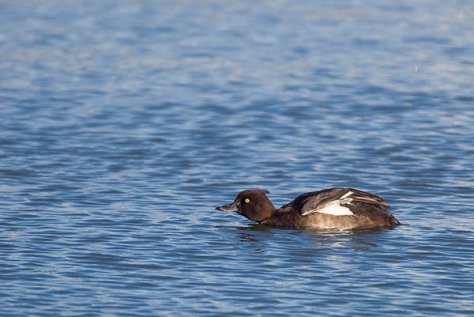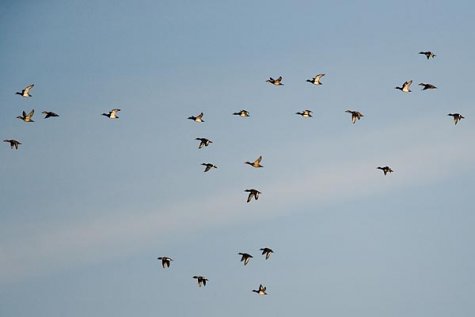Flocks of tufted ducks are leaving
Photos: Arne Ader
Translation:SilverT
Tufted duck
Tufted duck Tuttvart Aythya fuligula
The passing migration of tufted ducks usually ends in November; we often see them migrating in flocks with common pochards and it stands out.
There are about thirty thousand passing migrants in the autumn and good observation spots include Haapsalu Tagalaht, Matsalu, Hiiumaa, Käina bay and there are also some winterers that stay in our open waters.
The male bird, who was wearing springtime contrast colours, is wearing winter plumage by now, which has solid brown back-feathers and also the tuft on the head is now clearly visible – see from Arne`s photo. Female birds wear the same dull brown plumage all-year-round as do the young birds from the summer – their tuft on the head is more of an indistinct knob. In flight, we can see white stripes on the wings and there is also white in chest feathers. Tufted ducks have a stocky and small body with a relatively large head. The wingspan is over sixty five centimeters and even the young birds weigh more than half a kilo. The eyes are contrast yellow, brown feathers on the head, black tip on the bluish grey bill.
These good divers mainly feed on benthos – molluscs, all kinds of crustaceans, but also parts of plants. They migrate at night – while there may be massive amount of tufted ducks in the evening, there is emptiness in the feeding area early in the morning...










